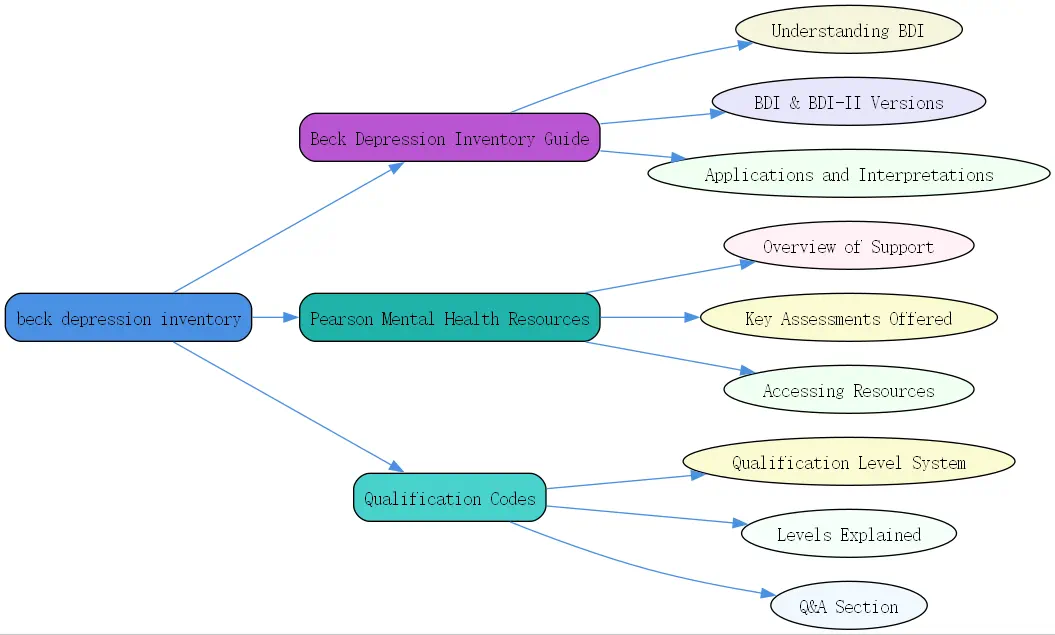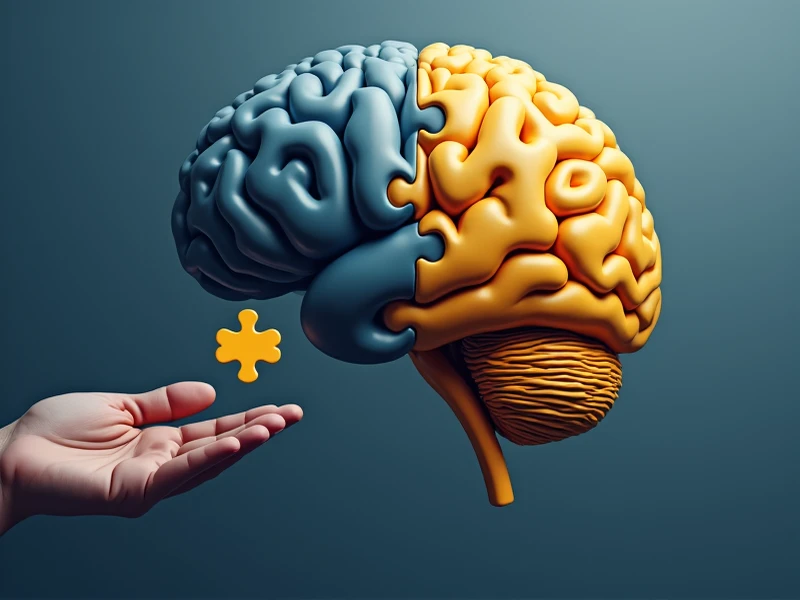Discover the intricacies of the Beck Depression Inventory (BDI), a pivotal resource in mental health diagnosis and treatment. Explore its versions, applications, and integration into Pearson’s clinical assessments.
Beck Depression Inventory: A Comprehensive Guide

Understanding the Beck Depression Inventory (BDI)
The Beck Depression Inventory (BDI) stands out as a cornerstone in the realm of psychological assessment tools, primarily aimed at identifying the presence and severity of depressive symptoms in individuals. Developed by Dr. Aaron T. Beck, this self-report inventory enables mental health practitioners to effectively screen for depression, providing a quick, reliable gauge of the patient’s condition. BrainTalking leverages the BDI to support accurate diagnoses and tailor intervention strategies accordingly, underscoring our commitment to comprehensive mental health care.
Versions of the Beck Depression Inventory: BDI and BDI-II
Beck Depression Inventory (BDI): An Overview
The original Beck Depression Inventory (BDI), introduced in the 1960s, set the standard for measuring depression’s depth and disparity. Continuous utilization across various settings, from clinical environments to educational and research platforms, reflects its robustness and adaptability to different demographics.
Beck Depression Inventory II (BDI-II): Updates and Enhancements
Responding to evolving diagnostic criteria, the Beck Depression Inventory II (BDI-II) incorporates refined statements and a sharper focus on symptoms aligning with the Diagnostic and Statistical Manual of Mental Disorders (DSM-IV). This updated version accommodates contemporary understanding of depression, making it an indispensable tool for today’s mental health professionals.

Comparing Beck’s Depression Inventory and Beck’s Depression Inventory 2
The transition from BDI to BDI-II not only embraced modifications in phrasing but also in the scoring system, enhancing the assessment’s sensitivity to clinical changes. Both tools remain pivotal, yet BDI-II provides a more nuanced reflection of current psychiatric classifications, ensuring practitioners can rely on its precision in clinical assessments.
Applications and Interpretations of the Beck Depression Inventory
Using the BDI for Screening and Diagnosis
In both clinical and non-clinical settings, the Beck Depression Inventory serves as a preliminary screening tool, guiding practitioners in identifying potential depressive disorders. It’s utilized widely in behavioral health settings and educational environments, ensuring timely intervention for those at risk.
Interpreting BDI Scores: What They Indicate
BDI scores categorize the severity of depression from minimal to severe, offering a clear framework for interpretation. Higher scores directly relate to more severe depressive symptoms, guiding clinical decisions regarding therapy or medication.
Limitations and Considerations When Using the Beck Depression Inventory
While the BDI is highly effective, it is crucial to consider it part of a broader assessment strategy, incorporating clinical interviews and other diagnostic tools to ensure comprehensive understanding and treatment planning.
Pearson Clinical Assessments: Mental Health Resources

Overview of Pearson’s Mental Health Support
Pearson’s suite of psychological assessments, including the BDI, underscores their unwavering support for mental health. These tools are designed to equip educators, clinicians, and practitioners with robust resources to address a spectrum of mental health conditions, ultimately fostering a supportive environment for affected individuals.
Key Mental Health Assessments Offered by Pearson
Behavior Assessment System for Children, Third Edition (BASC-3)
This comprehensive system aids in understanding children’s behaviors and emotions, enhancing educational and clinical interventions tailored to individual needs.
Brown Executive Function/Attention Scales (Brown EFA)
Focused on executive functioning and attention, these scales provide insight into cognitive processes linked to ADHD, enhancing targeted therapeutic strategies.
Other assessments covering ADHD, social-emotional skills, self-image, and autism
Pearson’s diverse range of assessments addresses various aspects of mental health, supporting a holistic approach to diagnosis and intervention.
Accessing Pearson’s Mental Health Resources

Pearson facilitates access to their resources through detailed guides, toolkits, and an online well-being zone, catering to professionals, educators, and individuals seeking support. These resources empower users to foster environments conducive to mental wellness.
Understanding Qualification Codes for Assessments
Pearson’s Qualification Level System
Understanding Pearson’s qualification codes (CL1, CL2, CL2R, CL3) is essential for selecting appropriate assessments, ensuring they are used by qualified individuals to maintain testing integrity and reliability.
Levels of Qualification Explained
Each qualification level, from CL1 to CL3, delineates the requisite expertise and training needed to administer specific assessments, safeguarding their proper implementation across various psychological and educational landscapes.
Q&A Section:
Q: How can mental health practitioners effectively integrate the Beck Depression Inventory into their practice?
A: Integrating the Beck Depression Inventory (BDI) involves a strategic approach where the tool is used in conjunction with comprehensive patient evaluations. Practitioners should be trained in interpreting BDI scores within the broader context of clinical assessments and patient history. Regular use as both a diagnostic and progress-monitoring tool ensures that interventions remain aligned with the patient’s changing symptoms, optimizing treatment outcomes.




